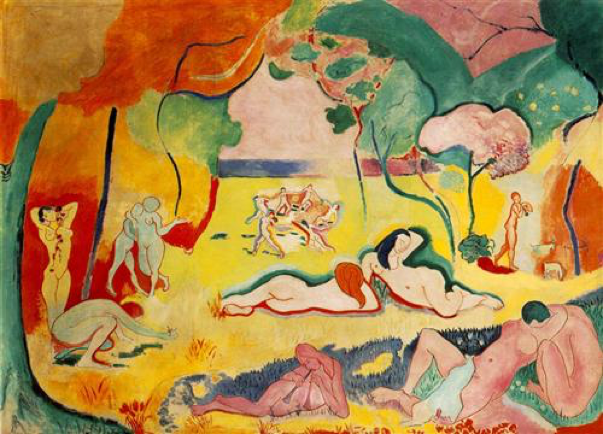On July 7, 2015, the website Phys Org reported on a study that found why the bright yellow pigments of paintings like "The Joy of Life" by Henri Matisse are no longer as vibrant. The June 2015 study, published in Applied Physics A, called for the development of international protocols to identify and help preserve "at risk" paintings.

"The Joy of Life" (1905 – 1906) by Henri Matisse, taken from WikiArt.org The beige tree in the upper left of the painting was believed to be a more vibrant yellow.
From the Phys Org website:
The research team found that the original chemical compound, cadmium sulphide, which is highly water-insoluble and bright yellow, is subject to a light-induced oxidation process that transforms it into a colorless, water-soluble cadmium sulphate. The cadmium yellow favored by Impressionist, post-Impressionist and early modernist masters poses a risk to many masterpieces of our cultural heritage, the study notes.
Read more at:
- Phys Org website
- Or the original research study, E. Pouyet et al., 2D X-ray and FTIR micro-analysis of the degradation of cadmium yellow pigment in paintings of Henri Matisse, Applied Physics A, June 2015 (found on www.researchgate.net)
Have high school students read the paragraph from the Phys Org website and answer some simple questions:
- What is the element being oxidized in the process described?
- What is the element’s oxidation state — before and after?
- How many electrons are lost through this oxidation process?







